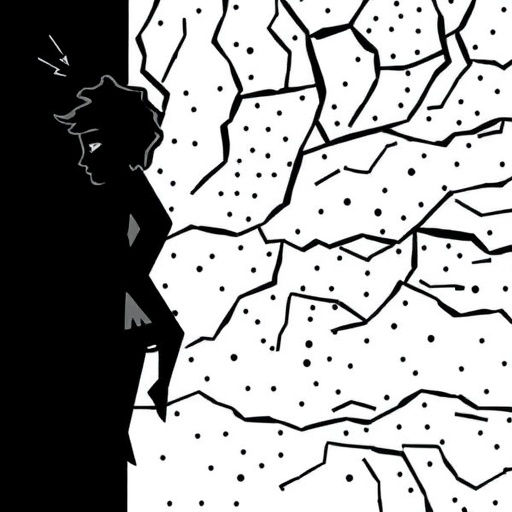Age-related vision decline has long been accepted as an unavoidable consequence of the aging process, often leading to diminished quality of life and increased risk of debilitating ocular diseases such as age-related macular degeneration (AMD). However, a groundbreaking new study by researchers at the University of California, Irvine (UC Irvine) challenges this fatalistic view, presenting compelling evidence that age-associated visual deterioration can be reversed through targeted retinal supplementation of polyunsaturated fatty acids (PUFAs). This pioneering work opens avenues not only for therapeutic intervention in vision loss but also for broader aging research with implications extending beyond the eye.
At the heart of this research is the enzyme Elongation of Very Long Chain Fatty Acids Protein 2 (ELOVL2), previously established as a robust molecular biomarker of aging. ELOVL2 plays a crucial enzymatic role in synthesizing very-long-chain polyunsaturated fatty acids (VLC-PUFAs), which are integral components of retinal cell membranes and crucial for maintaining neuronal function and visual acuity. Prior studies demonstrated that diminished ELOVL2 activity parallels declining visual function in aged organisms, highlighting this enzyme as a potential therapeutic target.
In the newly published paper titled “Retinal polyunsaturated fatty acid supplementation reverses aging-related vision decline in mice,” the research team from UC Irvine, collaborating with the Polish Academy of Sciences and the Health and Medical University in Potsdam, Germany, sought to circumvent the need to directly manipulate ELOVL2 gene expression. Instead, they investigated whether direct supplementation of downstream lipid metabolites could mitigate retinal aging independently of enzymatic activity levels—a seminal proof-of-concept for lipid-based retinal therapy.
This study focused on VLC-PUFAs, a specialized class of fatty acids that have increasingly been recognized as critical modulators of retinal integrity but whose decline with age had been previously difficult to reverse. Importantly, the researchers discovered that administering VLC-PUFAs intravitreally to aged mice yielded significant improvements in visual function, measured through rigorous electroretinography and behavioral assays sensitive to visual acuity and contrast sensitivity. Remarkably, supplementation with the more commonly studied omega-3 fatty acid docosahexaenoic acid (DHA) failed to produce comparable benefits, reinforcing the unique therapeutic potential of VLC-PUFAs.
The mechanistic underpinnings revealed through molecular analyses suggested that VLC-PUFA supplementation can reverse hallmarks of cellular aging within retinal tissue, including restoring lipid composition homeostasis and ameliorating oxidative stress markers typically elevated in aging eyes. This molecular rejuvenation aligns with the observed improvements in retinal function, positioning VLC-PUFAs not merely as supportive nutrients but as active agents capable of counteracting age-induced molecular degeneration.
Crucially, this research also established a genetic linkage between polymorphisms in the ELOVL2 enzyme and accelerated progression of AMD, underscoring the enzyme’s dual role as both an aging biomarker and a modulator of disease susceptibility. Identification of such genetic variants opens the door to precision medicine approaches, where individuals at heightened risk of vision loss could be identified early and targeted for preventive or remedial interventions focused on lipid metabolism.
Beyond the retina, collaboration with UC San Diego researchers has illuminated a broader biological significance of ELOVL2 and lipid metabolism in systemic aging phenomena, particularly immune senescence. Studies indicate that loss of ELOVL2 activity accelerates the aging of immune cells, implicating VLC-PUFA deficiency in compromised immune responsiveness and potentially higher cancer risk. These insights suggest that systemic lipid supplementation might exert rejuvenating effects on multiple aging tissues, with the retina providing a visually accessible model system.
The therapeutic implications are profound. Current AMD treatments primarily focus on managing late-stage disease manifestations, often with limited efficacy and irreversible progression of vision loss. A VLC-PUFA based intervention could represent a paradigm shift toward early-stage, disease-modifying treatment aimed at restoring retinal health rather than solely mitigating symptoms. Moreover, the ability to reverse molecular aging signatures heralds a new era in ophthalmology, where vision loss due to aging ceases to be inevitable.
The authors emphasize that while the data are preclinical, these findings justify expedited translational efforts toward human clinical trials. Challenges remain, notably in optimizing delivery mechanisms to ensure effective and sustained retinal bioavailability of VLC-PUFAs. Nevertheless, the selectivity and potency of VLC-PUFAs in restoring visual function underscore their therapeutic promise and warrant intense investigation.
Beyond therapeutic development, these discoveries expand our fundamental understanding of the molecular basis of aging. The identification of ELOVL2 as a key node linking lipid metabolism, cellular senescence, and functional decline provides a tangible target for anti-aging strategies. Importantly, the retinal model system offers an experimentally tractable platform to dissect complex lipid-mediated regulatory networks governing tissue aging.
In sum, the UC Irvine-led study exemplifies the convergence of molecular biology, lipidomics, and translational medicine to unlock regenerative potential in aged tissues. By demonstrating that targeted lipid supplementation can rejuvenate retinal function, this work paves the way for novel interventions to combat age-related vision disorders and suggests that metabolic modulation may represent a viable strategy to mitigate systemic aging effects. Future research will determine how these findings translate to human patients and how they might integrate with multifactorial approaches to age-related disease management.
Such innovative research not only reshapes our approach to ocular aging but also invites broader reconsideration of lipid metabolism as a universal axis in aging biology. As this field evolves, the promise of restoring youthful function through biochemically tailored interventions becomes increasingly tangible, holding transformative implications for healthy aging and longevity.
Subject of Research: Animals
Article Title: Retinal polyunsaturated fatty acid supplementation reverses aging-related vision decline in mice
News Publication Date: 24-Sep-2025
Web References:
– https://www.science.org/doi/10.1126/scitranslmed.ads5769
– https://medschool.uci.edu/about/faculty/dorotask
– https://ctvr.uci.edu/
– https://today.ucsd.edu/story/researchers-identify-gene-with-functional-role-in-aging-of-eye
– https://medschool.uci.edu/news/key-enzyme-lipid-metabolism-linked-immune-system-aging
References: Retinal polyunsaturated fatty acid supplementation reverses aging-related vision decline in mice, Science Translational Medicine, 2025
Image Credits: UC Irvine School of Medicine
Keywords: Eye diseases, Vision disorders, Age-related macular degeneration, Lipid metabolism, ELOVL2 enzyme, Polyunsaturated fatty acids, Aging reversal, Retinal therapy, Omega-3 fatty acids, Docosahexaenoic acid, Immune system aging
Tags: age-related vision lossbreakthroughs in aging researchcombating age-related ocular declineELOVL2 enzyme in agingocular disease prevention strategiespolyunsaturated fatty acids for visionretinal supplementation therapyreversing macular degenerationtherapeutic interventions for agingUC Irvine vision researchvisual acuity enhancementVLC-PUFAs and eye health





